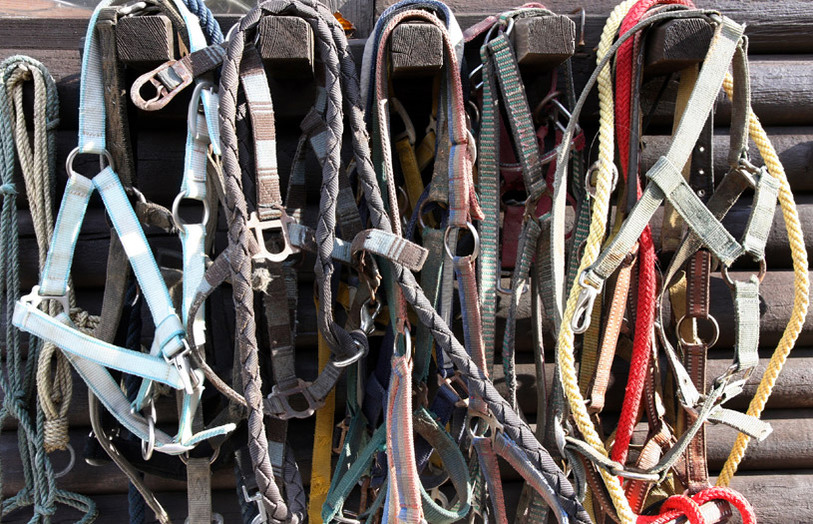
Are You & Your Horse Ready For Bitting Advice? The Steps You Need To Consider First
Equestrian Advice & Guides All Disciplines
Build your business profile for FREE and expose your services to thousands of potential clients!
Create my profile now!
Back in January we attended BETA International 2020 to check out what’s new in the equestrian market and hear about the latest technology developments from some of the biggest brands in the industry.
We attended several talks, but one of the most thought provoking was a talk from Dr. David Marlin, a scientific and equine consultant with more than 25 years experience in physiology and biochemistry. His work is focused primarily on equine health and safety, with a broad range of specialist areas including exercise physiology, nutrition, fitness, training, performance, thermoregulation, competition strategy, transport and respiratory disease. You can find out more about his extensive experience and accreditations on his personal website here > https://davidmarlin.co.uk/about/
On this particular occasion, he was talking about the safety of headcollars, which are of course one of the most regularly used pieces of equipment in the equestrian industry. This topic has been much discussed in previous years, with fieldsafe headcollars making an appearance on the market around 10 years ago. However, it seems this new development in headcollar technology has not been as widely adopted as anticipated, and having heard from Dr. David Marlin, I wonder now if it isn’t because of the lack of education around the dangers of headcollar use.

Dr. David Marlin speaking at BETA International 2020.
He started out by highlighting the fact that when you look at the literature and scientific literature around the subject, there are virtually no studies recording how headcollars are used, what circumstances they are used in, how often they are used, and whether they are a risk of injury.
So in 2019 he decided to gather his own research, which he began by conducting a survey that allowed him to gain some data on horse owners’ current use of headcollars.
This research was sponsored by Equilibrium Products and promoted by a third party company, Red Fox Media, to ensure an unbiased response to the survey. The survey was run over the course of 40 days and consisted of 18 structured questions and 1 free text box that allowed users to give their own opinions at the end of the survey.
They had a great response, with 5,615 completed survey forms submitted, which is a reliable enough number of responses to be able to start to make conclusions. The majority of respondents reported they were involved in Dressage, Pleasure riding, Show Jumping, Eventing and Showing, which gave them a fairly good representative cross section of horse owners.
The Survey Findings;
Their first interesting finding was that 88% of people are using a headcollar on a daily basis, with the majority using them two to four times a day, for anywhere between a few minutes up to an hour at a time.
Unsurprisingly, to those of us in the industry, they found that the most commonly used type of headcollar was leather, then synthetic, webbing and rope headcollars. More surprisingly, they also found that the percentage of people using safety headcollars was very small in comparison, which David explained is likely to suggest that people don’t perceive the use of the headcollar as a risk to their horse’s health and safety, or even their own.

This table shows the percentage breakdown of the types of headcollar being used by the survey respondents.
Despite this, when asked whether they had ever experienced a horse or themselves being injured as a direct result of headcollar use, over 30% of respondents reported incidents where the horse was injured, and 15% of people had been injured themselves in a headcollar related incident. This is certainly much higher than I had ever expected.
The data on when and where the incidents occurred was even more interesting, with 70-80% of them happening while the horse was tied up, whether that be outside, in the stable, in the trailer or lorry, or while travelling. Only about 24% of injuries occurred in the field, but this is still quite a large proportion.

So what are the consequences of a headcollar related injury? Many cases may just result in mild cuts or abrasions, but David explained that headcollars can cause facial paralysis, injury to the neck (so that they can end up with a permanent head tilt) and in severe cases, can even result in fractures of the neck, which can be fatal.
The survey they conducted showed that the majority of cases reported were milder cuts and bruises, but 4% of the injuries resulted in neck fractures, with a scarily big 5% of these (167 cases) resulting in fatality.
Testing;
So the question Dr. Marlin was asking is ‘how can we prevent these injuries more effectively?’ Abandoning the use of headcollars entirely just wouldn’t be practical for all horse owners. So when should a headcollar release to ensure it’s safe, whilst still remaining functional? A headcollar that opens under too little force isn’t practical for use, whereas a headcollar that never opens is a safety risk.
To get a better idea of the forces applied over the horse’s poll through normal activities, they collaborated with Dr. Roberta Ferro De Godoy at Writtle University College, and used a wireless pressure matt system to look at the pressure over the poll whilst horses were doing different activities; just standing, tied up, and being trotted up in hand. This gave them enough data to get a clearer idea of what sort of force would cause damage to the unprotected soft facial tissues, muscles, nerves and blood vessels. Pulling down on a headcollar transmits all of that force to these sensitive areas.

The above image shows the device used to measure the forces across the poll, with example readings showing the effects of the level of force as it increases.
Armed with this data, they then began to look at what force was currently needed to open these different types of headcollar. So they designed a test rig which consisted of a metal frame, with a heavy duty winch to pull down on the headcollar, and a device to measure the level of force being applied.
To test the reliability of their self-built rig, they performed the same test multiple times on various standard types of headcollars, to check that the results were similar enough each time.

The above table shows an example of two tests for a safety headcollar which was tested six times.
This gave them confidence in their testing rig, so it was on to the main event!
The different types of headcollar tested were;
The Results;
The most striking thing about the results was the force needed to open the webbing headcollar. The average came out at a whopping 600 kilos! In David’s words, “That means if you have a 500 kilo horse, you can string it up from the ceiling and hang it from its headcollar...” which is a terrifying thought, especially as they found that webbing was one of the most commonly used types of headcollar.
Coming in second place was the leather cob headcollar, with over 200 kilos of weight needed to open it. Despite needing dramatically less force than was needed to open the webbing headcollar, this still doesn’t seem at all safe, especially considering the survey found they were the most commonly used type of headcollar by a long way. Interestingly, the third most difficult to open was one of the safety headcollars that was tested, which leads you to wonder what exactly the manufacturer had based their calculations on when creating such a device.
Overall, the results clearly showed us why headcollars can be such a risk to both the horse and handler’s safety. You don’t want a headcollar to open when you are leading a horse in the normal way, as this could pose a different risk to both parties. What you want is for a headcollar to release when the horse is pulling back against either a fixed object or a person, to prevent having somebody dragged along.
The Conclusion;
Based on all the tests they conducted, they concluded that a headcollar should probably be opening at around 50 to 60 kilos. At this weight, if a horse started to drag a person or the rope got trapped around the neck, then the headcollar should release. However, under normal use it is unlikely that it would release, and if it does, then you’ve got to the point where there is a serious risk of injury to the horse or handler.
The Solution;
Since attending BETA I have found myself using headcollars with much more caution, and it’s left me wondering what the solution to all of this is. Then I discovered something that could well be the answer!
Equilibrium Products, who sponsored Dr. David Marlin’s research, have developed their own safety headcollar in response to his findings. Amazingly, this new headcollar utilises a reusable safety system (patent pending) that releases when needed, to prevent injury to the soft tissue and nerves on the face, poll and neck of the horse, or to the handler.
The Equilibrium Products Stellar Head Collar has been designed in a smart, leather-look PVC for durability, weatherproofing and reduced maintenance, with long-lasting stainless steel fittings and neoprene padding at the nose and poll for the horse’s comfort.


It comes in a choice of 2 colours, Brown or Black, with 5 different sizes available, X Small – X Large, and is fully adjustable to ensure a perfect fit.
 As you would expect, the Stellar Head Collar’s release mechanism has been fully tested in the laboratory and field trials, for complete peace of mind. It features an adjustable press-stud fastener and keepers on either side of the face. By moving the position of the keeper, you can adjust the amount of force required to open the headcollar, allowing you to tailor it to your needs.
As you would expect, the Stellar Head Collar’s release mechanism has been fully tested in the laboratory and field trials, for complete peace of mind. It features an adjustable press-stud fastener and keepers on either side of the face. By moving the position of the keeper, you can adjust the amount of force required to open the headcollar, allowing you to tailor it to your needs.
 They have also developed the Stellar Lead Rope to be used in conjunction with the Stella Head Collar, to ensure consistency with the required release point. This smart and durable lead rope has a stop ‘cuff’ at the end of the rope for extra grip, with a chunky rubber collar near the clip end of the rope to enable the handler to maintain a good grip of the rope under the horse’s head.
They have also developed the Stellar Lead Rope to be used in conjunction with the Stella Head Collar, to ensure consistency with the required release point. This smart and durable lead rope has a stop ‘cuff’ at the end of the rope for extra grip, with a chunky rubber collar near the clip end of the rope to enable the handler to maintain a good grip of the rope under the horse’s head.
Find out more about the Equilibrium Products Stellar Head Collar and Stellar Lead Rope, and pre-order yours now (available March 2020).
You could WIN the solution!
Why not take our quiz to find out what your horse name would be, and you'll be entered into our prize draw to win a bundle of goodies from Equilibrium Products worth £197!
The prize bundle contains both the Stellar Head Collar and Stellar Lead Rope, along with a Therapy Massage Mitt!
So what are you waiting for, take the quiz now!

